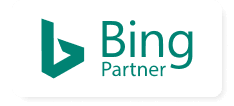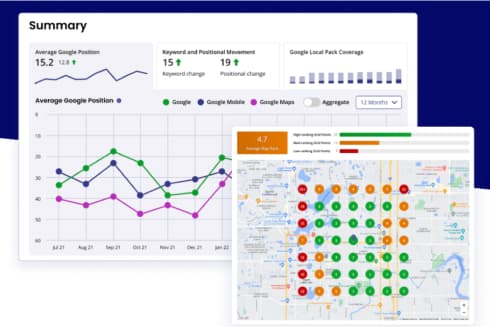How to Understand and Take Advantage of the Sales Funnel
In the world of marketing and sales, the sales funnel is a crucial tool that helps businesses convert prospects into loyal customers. This model visualizes the buying process from the first contact to the final purchase decision, breaking down the customer journey into manageable stages. In essence, the sales funnel represents the path a prospect follows from the moment they come into contact with your brand to the point where they make a purchase. Each stage of the funnel reflects a different state of the customer journey, from initial awareness to consideration and finally the purchase decision.
Understanding how each stage of the funnel works allows sales and marketing professionals to optimize their strategies, personalize their messages, and improve conversion rates. The first stage, known as the Awareness phase, is where prospects become familiar with your brand. The second stage, Consideration, is when they evaluate your products or services compared to those of the competition. Finally, in the Decision stage, prospects make the purchasing decision and become customers.
In this article, we’ll explore each stage of the sales funnel in detail, discuss best practices to maximize its effectiveness, and provide practical strategies to implement in your business. By understanding and applying these concepts, you’ll be able to significantly improve your ability to attract, convert, and retain customers, thereby driving growth and success for your business.
Sales Funnel Definition
The sales funnel is a strategic model that describes the process of converting prospects into customers, represented visually in the form of a funnel. This model divides the customer journey into key stages: Awareness, Consideration, and Decision. In the Awareness stage, prospects discover your brand and learn about your products or services. During the Consideration stage, they evaluate their options and compare alternatives. Finally, in the Decision stage, they make the purchase decision. The sales funnel helps businesses understand and optimize each phase of the process to improve conversion rates and maximize business success.
Process that a Sales Funnel Follows
The sales funnel process consists of several key stages, each of which requires specific approaches and strategies:
- Lead Generation: The first step is to attract the attention of potential customers through various marketing tactics. This includes advertising campaigns, content marketing, search engine optimization (SEO), and social media activities. The goal is to generate interest and capture prospects’ contact information.
- Lead Qualification: Once prospects are in the funnel, it is crucial to qualify their potential to determine which ones are most interested and likely to become customers. This can be done by evaluating their behavior, interactions, and profile. Marketing automation and CRM (Customer Relationship Management) tools are useful at this stage to manage and qualify leads.
- Lead Nurturing: This phase is all about keeping prospects engaged and guiding them through the funnel. This is achieved through the delivery of valuable and relevant content, such as informational emails, case studies, and product demos. Lead nurturing seeks to educate and persuade prospects to move forward to the decision stage.
- Presentation and Follow-up: As prospects move through the funnel, they reach the Consideration stage, where more direct interaction is needed. This is where specific offers are presented, questions are answered, and objections are addressed. Sales presentations, product demonstrations, and personalized consultations play a crucial role in this phase.
- Closing the Sale: The final stage of the funnel is Decision. Here, the goal is to convert prospects into customers through effective closing strategies, such as special offers, discounts, or guarantees. A simple, frictionless purchasing process is also essential to ensure that prospects complete the transaction.
- Loyalty and Post-Sale Follow-Up: The sales funnel doesn’t end with the purchase. It’s critical to continue engaging with customers to ensure satisfaction and foster loyalty. This includes offering post-sale support, soliciting feedback, and providing incentives for future purchases. Loyalty helps turn customers into brand advocates, which can lead to referrals and additional sales.
Each of these stages requires a strategic and tactical approach to maximize the effectiveness of the sales funnel and achieve success in converting prospects into satisfied customers.
Benefits of the Sales Funnel for your Business
Improve Sales Process Efficiency
A well-defined sales funnel helps identify the exact stages prospects are in, allowing sales and marketing teams to focus on specific activities that move leads further down the funnel. This reduces time and resources spent on unqualified prospects and improves the overall efficiency of the sales process.
Optimize the Conversion Rate
By understanding the different stages of the sales funnel, businesses can develop customized strategies for each phase, increasing the likelihood of converting leads into customers. By creating relevant content and implementing effective tactics at each stage, the conversion rate can be significantly improved.
Facilitates Measurement and Analysis
The sales funnel provides a clear structure for measuring and analyzing the performance of marketing and sales strategies. It allows you to identify which tactics are working and which need adjustments, offering valuable data that can be used to optimize your approach and improve results over time.
Increase Customer Satisfaction
By guiding prospects more effectively through the buying process, the sales funnel helps ensure that potential customers receive the information and support they need at every stage. Not only does this make decision-making easier, but it also improves the customer experience, increasing customer satisfaction and the likelihood of retention.
Allows for More Precise Segmentation
The sales funnel allows you to segment prospects based on their position in the buying process. This precise segmentation allows you to send more relevant and personalized messages and offers, which can increase engagement and the likelihood of conversion. It also helps you identify and prioritize the most valuable leads.
Improve coordination between marketing and sales
A well-structured sales funnel improves alignment between marketing and sales teams, ensuring that both are working towards the same goals and strategies. This close collaboration facilitates the flow of information and improves the effectiveness of marketing campaigns and sales efforts, leading to better business outcomes.
Foster Customer Loyalty and Retention
The sales funnel not only focuses on acquiring new customers, but also on retaining existing ones. By continuing to engage and provide value to customers after the sale, loyalty is fostered and retention is increased. Satisfied customers are more likely to make repeat purchases and recommend the company to others.
These benefits highlight the importance of implementing and optimizing a sales funnel in your business, allowing for more effective lead management and continuous improvement in marketing and sales strategies.
Sales Funnel Stages
Awareness
The Awareness phase is the first stage of the sales funnel, where prospects discover your brand and begin to learn about your products or services. In this phase, the goal is to attract the attention of a broad audience and generate interest. Effective strategies include advertising campaigns, content marketing, search engine optimization (SEO), and social media activities. The key is to provide valuable content that resonates with your audience’s needs and wants, laying a solid foundation for the next stages of the funnel.
Interest
Once prospects are aware of your brand, they move into the Interest phase. At this stage, prospects seek out more information about your offerings and begin to engage with your content more deeply. It’s crucial to keep their interest by delivering relevant and useful content, such as blogs, infographics, and emails. The goal is to educate prospects and keep them engaged, paving the way for the next phase of the funnel.
Consideration
During the Consideration phase, prospects are evaluating their options and comparing your products or services to those of the competition. Here, it’s important to highlight the unique benefits and features of your offerings. Product demos, case studies, and customer testimonials are effective tools for persuading prospects that your solution is the best option. At this stage, prospects need to see how your product or service can solve their specific problems or meet their needs.
Intention
In the Intent phase, prospects show a clear interest in your products or services and are close to making a purchasing decision. This is the time to address any objections or concerns they may have and provide incentives to close the sale. Special offers, discounts, and guarantees can be effective in driving prospects to the final phase. Facilitating a frictionless and easy purchasing process is crucial to prevent prospects from abandoning the purchase at this critical stage.
Buys
The Purchase phase is where prospects finally make the decision to purchase your product or service. At this stage, it’s essential to offer a positive and seamless shopping experience. Make sure the checkout process is secure and easy, and provide excellent customer service to resolve any issues that may arise. A satisfying shopping experience can turn shoppers into repeat customers and brand advocates.
Loyalty
The Loyalty phase focuses on maintaining the relationship with customers after the purchase. It is crucial to continue interacting with customers to ensure their satisfaction and foster loyalty. Strategies such as loyalty programs, satisfaction surveys, and post-sale support are essential at this stage. Satisfied customers are more likely to make repeat purchases and recommend your brand to others, creating a continuous cycle of sales and referrals.
Advocacy phase
In the Advocacy phase, loyal customers become active advocates for your brand, recommending it to others and sharing their positive experiences. This stage is vital to the organic growth of your business, as word-of-mouth recommendations and positive reviews can attract new prospects into the sales funnel. Encouraging advocacy through incentives, referral programs, and excellent customer service can amplify your company’s marketing and sales efforts.
Each of these phases is crucial to guiding prospects through the sales funnel and turning them into loyal, satisfied customers. Implementing effective strategies at each stage can significantly improve your conversion rates and the overall success of your business.
Differences between the Sales Funnel and the Marketing Funnel
Approach and Objectives
The sales funnel and the marketing funnel, although related, have different approaches and objectives. The marketing funnel focuses on attracting and capturing the attention of potential customers by generating leads and feeding them with relevant content to keep them interested. Its main goal is to create awareness and generate demand. On the other hand, the sales funnel focuses on converting those marketing-generated leads into customers. Its goal is to guide prospects through the buying process until the sale is closed, ensuring a smooth transition from initial interest to the acquisition of the product or service.
Stages and Processes
The stages of the marketing funnel typically include Awareness, Interest, and Consideration. In the Awareness phase, you use strategies to attract the attention of a broad audience, such as advertising campaigns and content marketing. In the Interest phase, you seek to capture prospects’ attention through relevant and valuable content. In the Consideration phase, prospects evaluate their options and seek more detailed information.
In contrast, the sales funnel includes more specific stages related to the buying process: Qualification, Lead Nurturing, Presentation and Follow-up, Closing the Sale, and Loyalty. The Qualification phase assesses the viability of leads generated by marketing. In Lead Nurturing, prospects are kept engaged with persuasive content. The Presentation and Follow-up phase involves more direct interactions, such as product demonstrations and personalized consultations. Finally, the Closing the Sale and Loyalty phases ensure that prospects are converted into customers and kept satisfied.
Interaction and Collaboration
The marketing funnel and the sales funnel must work together to be effective. Marketing generates leads and nurtures them until they are ready to be handed over to the sales team. Collaboration between these two teams is crucial to ensure that leads receive consistent and appropriate treatment throughout the entire process. Continuous feedback between marketing and sales helps adjust strategies and improve overall results.
Measurement and KPI
Key performance indicators (KPIs) also differ between the marketing funnel and the sales funnel. In the marketing funnel, KPIs can include metrics such as the number of leads generated, the conversion rate of visitors to leads, the reach of advertising campaigns, and social media engagement. In the sales funnel, KPIs focus more on the conversion of leads to customers, the length of the sales cycle, the sales closing rate, and the average transaction value. Both sets of metrics are essential for evaluating performance and adjusting strategies accordingly.
Time and Duration
The timing and duration of each stage can also vary between the two funnels. Marketing funnel stages tend to be broader and longer-term, focusing on building relationships and trust with prospects over time. On the other hand, sales funnel stages are typically more specific and short-term-oriented, with a focus on quickly moving qualified prospects toward closing the sale. Effective coordination between marketing and sales can help balance these timings and ensure a continuous flow of prospects through the conversion process.
Tools and Tactics
The tools and tactics used in each funnel may also differ. In the marketing funnel, common tactics include SEO, content marketing, social media campaigns, email marketing, and paid advertising. Tools may include marketing automation platforms, CRM (Customer Relationship Management), and marketing analytics tools. In the sales funnel, tactics include lead scoring, personalized follow-up, product demos, and sales closing strategies. Tools used are typically CRM, sales management software, and direct communication tools such as email and phone calls.
In summary, although the sales funnel and the marketing funnel are interconnected and both are essential for business success, each has a specific approach, stages, objectives and tools that complement each other in guiding prospects from initial awareness to conversion and customer loyalty.
Stages of Marketing and Sales Funnels
Marketing Funnel
- Top of the Funnel (ToFu)
The Top of the Funnel phase is where prospects discover your brand and become familiar with your products or services. The main goal is to generate awareness and attract a broad audience. Strategies such as social media advertising, SEO campaigns, content marketing, and paid ads are critical at this stage. Content should be informative and engaging, designed to capture prospects’ initial interest and draw them to your website or social media platforms. - Middle of the Funnel (MoFu)
In the Middle of the Funnel phase, prospects are already familiar with your brand and are interested in learning more about your offerings. Here, you focus on nurturing this interest by delivering relevant and valuable content, such as blogs, infographics, videos, and newsletters. The goal is to educate prospects and build a strong relationship with them. Effective strategies include sending personalized emails, hosting webinars, and creating comparative content that highlights the advantages of your products or services over the competition. - Bottom of the Funnel (BoFu)
The Bottom of the Funnel phase is where prospects are ready to make a purchasing decision. At this stage, it is crucial to provide social proof and customer testimonials, as well as targeted offers and product demos. The goal is to persuade prospects that your solution is the best option and make the purchasing process easier. Strategies such as free trials, personalized consultations, and special offers can be effective in converting prospects into customers.
Sales Funnel
- Top of the Funnel (ToFu)
In the Top of the Funnel phase, the team focuses on qualifying leads generated by marketing. Here, they determine which prospects are most interested and likely to become customers. This qualification is based on the prospects’ behavior, interactions, and demographic profile. CRM and marketing automation tools are essential for managing and qualifying leads, ensuring that the sales team focuses on the most promising prospects. - Middle of the Funnel (MoFu)
During the Middle of the Funnel phase of sales, the goal is to nurture qualified leads and guide them toward a purchasing decision. This is accomplished through more direct and personalized interactions, such as informational emails, case studies, product demos, and phone follow-ups. The sales team works to address prospects’ questions and concerns, highlighting how your products or services can meet their specific needs. - Bottom of the Funnel (BoFu)
At the Bottom of the Funnel stage, prospects are ready to close the purchase. Here, the goal is to ensure that the purchasing process is as smooth and easy as possible. Strategies such as presenting special offers, discounts, warranties, and personalized support are crucial at this stage. Additionally, excellent customer service should be provided to resolve any issues that may arise and ensure a positive buying experience. This not only closes the sale, but also lays the groundwork for loyalty and future purchases.
Loyalty and Follow-up
Although traditionally outside the main funnel, both marketing and sales must continue to work together after the purchase to maintain the relationship with customers. The loyalty phase includes post-sale follow-up, feedback solicitation, ongoing support, and loyalty programs. Satisfied customers are more likely to make repeat purchases and recommend your brand to others, closing the loop and bringing new prospects into the funnel.
Implementing effective strategies at each of these stages can significantly improve your conversion rates and the overall success of your business, ensuring smooth and consistent lead management from first contact to loyalty.
The Importance of the Sales Funnel for Business Success
The sales funnel is an essential tool for any company looking to optimize its conversion process and maximize its commercial results. Through its different phases – from lead generation to customer loyalty – the sales funnel allows for structured and efficient management of prospects, ensuring that each stage of the purchasing process is well attended to and optimized.
Understanding and applying the sales funnel helps improve sales team efficiency, optimize conversion rates, and increase customer satisfaction. By properly segmenting and nurturing leads, businesses can build stronger, longer-lasting relationships with their customers, fostering long-term loyalty and retention.
Additionally, the sales funnel facilitates collaboration between marketing and sales teams, aligning their goals and strategies to work in synergy. This not only improves the effectiveness of sales campaigns and efforts, but also provides clearer insights and valuable data to continually adjust and improve the tactics employed.












